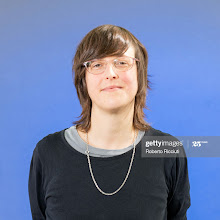According to Artur Żmijewski, his recent work Democracies – a series of documentary clips depicting different protest movements from around the world – is not art. “Art”, according to Żmijewski, “is too weak to present political demand” (Prince 2009, p.6). Artists have in the past reached a similar conclusion – turning to existing political systems as a more direct means of effecting change. In 1980 Joseph Beuys was instrumental in setting up the Green Party in Germany, running as its candidate for the European Parliament, and, in 1988 Maria Thereza Alves co-founded the Green Party in Brazil. In a recent lecture Alves points out that it becomes the role of the artist to “judge in each situation whether art or politics provides a better solution” (Alves 2010).
As well as proposing theoretical solutions in book form, Superflex have also attempted to find practical solutions to real life problems in Africa. Although falling under the umbrella of their artistic practice, these projects seem more akin to the sort of thing you might expect to see being pioneered by a charity or a development agency. In 1996-7 they worked with engineers to develop the Supergas system, which is capable of turning compostable waste in the form of human / animal dung into “sufficient gas for the cooking and lighting needs of an African family”, thereby allowing them to “achieve self-sufficiency in energy” (Superflex 1997). The realisation of the Supergas system seems to epitomise the marriage between creative thinking and functionality which Araeen calls for by presenting the example of the desalination plant. What is interesting about this project, and indeed Beuys’ and Alves’ involvement in Green politics, is how it shifts our perception of the role of the artist when viewed as an important component part of a wider practice…
How to Reconcile the Careerist Mentality with Our Impending Doom
By Ellie Harrison
May 2010
Contents
- Preface
- Global Warming Projection
- Setting the Scene
- The Careerist Mentality
- Our Impending Doom
- A Rude Awakening
- Now or Never
- Atomised Art World
- Free Our Minds
- Outside the Bubble
- Plan of Action
- New Moral Code
- Clandestine Insurgence
- Alternative Knowledge
- Practical Solutions
- Multi-Pronged Approach
- A Reconciled Practice
- Our Fully Functional Role
- References
